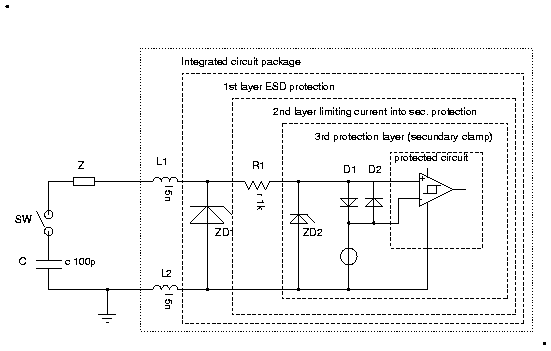In most cases the protections have to be cascaded.
The outmost layer has to intercept events that would immediatelly become fatal such as ESD.
The second layer has to limit currents in a way that a third layer can clamp overvoltage to a range that does not joepardize the function of the following circuitry anymore.

Fig. 1: Layers of a small signal circuit with it's protection
In the circuit shown above C simply represents an energy reservoir. The charged capacitor is typical for ESD and fast transients.
In some cases the energy reservoir can also be the flyback energy of an inductance or in extreme cases the energy comming out of an automotive alternator when the load is disconnected (load dump).
Z is the impedance between the energy reservoir and the IC. Usually Z is complex consisting of inductive as well as resistive contributions.
L1 and L2 are the pin inductances of the IC. Their values mainly depend on the package used.
ZD1 is the ESD protection. This clamp has to limit the voltage to prevent oxide rupture in the resistor (Usually a thick oxide can handle some hundred Volt while is ESD cases C may well be charged to some kV!). Depending on technology and structure usd for ZD1 left of R1 the voltage still may reach several 10V for some ns!
R1 simply is there to limit the current flowing into the second clamp.
ZD2, D1, D2 protect the input of the amplifier (protected circuit).
The details of the circuit are discussed in the following links:
- Most common pulses and couplings
- primary ESD protection
- current limiting circuits
- secundary protection